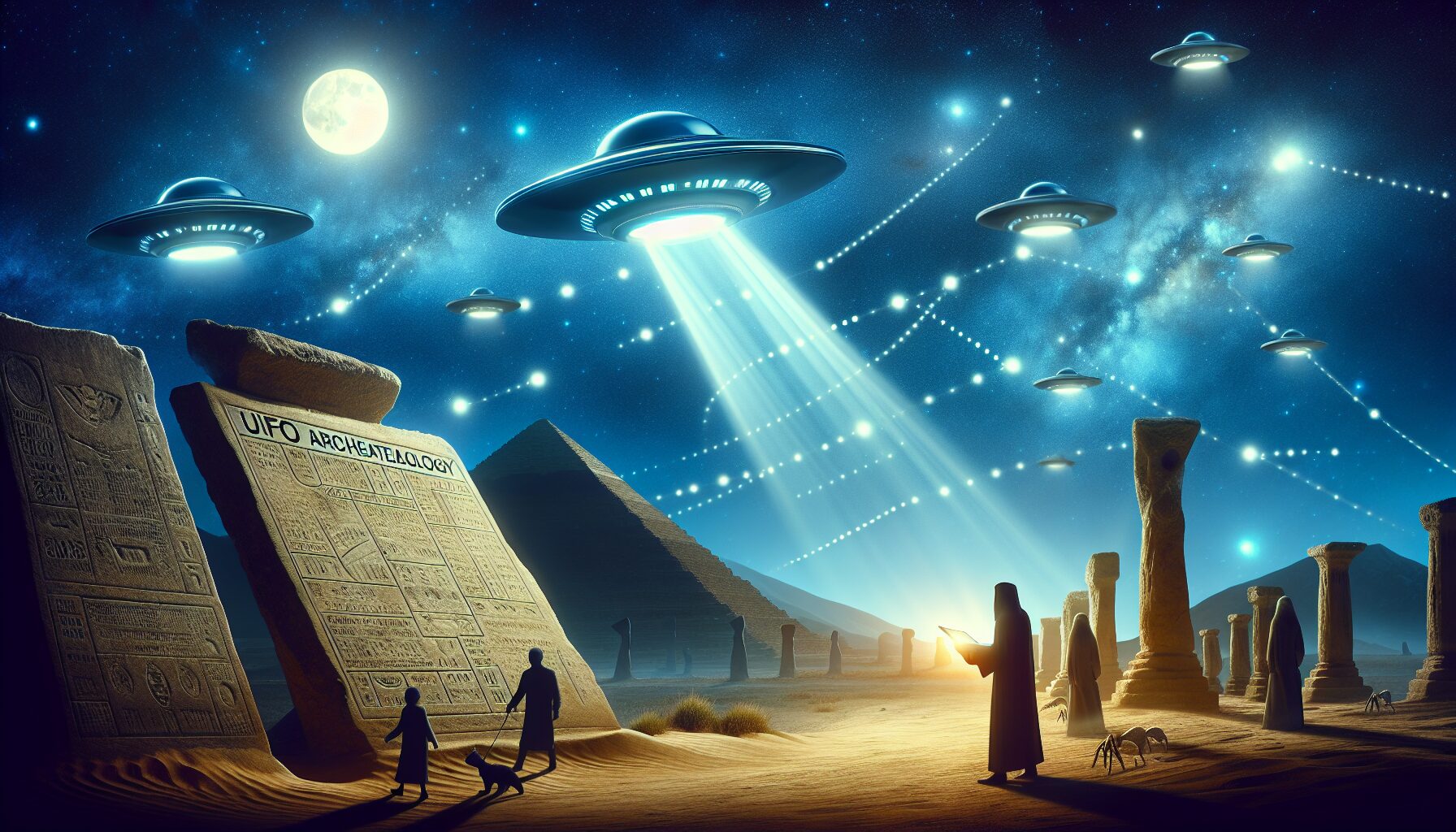For decades, stories of unidentified flying objects (UFOs) have captivated the imagination of people worldwide. But what if these visitors have been with us for longer than we thought, perhaps weaving through the tapestry of humanity’s ancient past? Welcome to the burgeoning field of UFO archaeology, where researchers combine the rigorous study of archaeology with the mysterious allure of ufology.
The Foundations of UFO Archaeology
UFO archaeology posits that there might be physical evidence of past extraterrestrial visits on Earth, artifacts left by beings from other worlds. This idea, still in its infancy, seeks validation through the reinterpretation of ancient texts, monuments, and structures under a new light—that of potential alien interaction.
- Ancient Astronaut Hypothesis: Originally popularized by Erich von Däniken’s book, Chariots of the Gods, this hypothesis suggests that advanced alien civilizations visited Earth in antiquity and influenced the development of human cultures.
- Historical Artifacts and Relics: Proponents of UFO archaeology often cite peculiar artifacts as evidence—such as the Dropa stones of China or the unexplained glories of the Nazca Lines in Peru.
Reinterpreting Ancient Records
Several ancient texts and artwork can be interpreted to suggest extraterrestrial encounters.
“We have found depictions that seem to show flying vehicles or figures wearing something akin to space suits,” says Dr. Sarah Hansen, a leading researcher in the field. “These are found in disparate cultures, yet they share some similarities that are striking.”
- Sumerian Texts: Ancient Sumerians left behind some of the earliest known records, including detailed descriptions of gods descending from the heavens. Some interpretations suggest these might be visitors from another world.
- Indian Epics: Texts like the Mahabharata and Ramayana describe flying machines called Vimanas, leading some to speculate they were depictions of extraterrestrial craft.
Mysterious Monuments and Their Implications
Some of the most famous monuments around the world bear unexplained features, leading to theories that they might have originated through extraterrestrial influence. Here are a few examples:
- The Great Pyramids of Giza: The precision and sophistication with which these structures were built have led some to theorize that ancient Egyptians might have utilized alien technology.
- Stonehenge: This prehistoric monument raises questions about its exact purpose and the capabilities required for its construction, with some suggesting extraterrestrial intervention as a possibility.
- Puma Punku: Located in Bolivia, the archaeological site of Puma Punku is renowned for its complex stone structures. As Live Science reports, the precision with which the stones were cut challenges our understanding of pre-Columbian engineering.
The Skeptic’s Perspective
However, UFO archaeology isn’t without its critics. Many in the scientific community caution against drawing unfounded conclusions based on speculative interpretations. Archaeologist Kenneth Feder, author of Frauds, Myths, and Mysteries: Science and Pseudoscience in Archaeology, emphasizes that
“Extraordinary claims require extraordinary evidence. We must approach these hypotheses with caution and rigor, ensuring our methods are sound and our conclusions justified.”
While fascinating, these ancient interpretations require profound evidence and corroboration. Skeptics argue that many of the so-called anomalies can be explained by more conventional means, such as cultural diffusion or misunderstood technological capabilities of ancient societies.
Modern Tools in Ancient Mysteries
Advances in technology have offered new possibilities for investigation. Ground-penetrating radar, remote sensing tools, and sophisticated dating techniques allow researchers to explore sites non-invasively, leading to new insights and discoveries.
- 3D Scanning and Reconstruction: Digital reconstructions of ancient sites can reveal details obscured by the ravages of time, potentially shedding light on their true origins.
- DNA Analysis: In some cases, DNA recovered from ancient remains can offer clues about interactions between early humans and potential otherworldly beings.
The Cultural Impact of UFO Archaeology
Beyond the quest for knowledge, UFO archaeology influences popular culture and public perception. It challenges the entrenched narrative of human history and encourages open-mindedness about possibilities that extend beyond Earth.
With each purported discovery, a new generation of enthusiasts is inspired to probe the edges of mainstream archaeology, seeking answers to questions about humanity’s origins and place in the universe. Whether or not evidence of ancient astronauts is ever conclusively found, the field broadens our understanding and appreciation of ancient cultures and their accomplishments.
Conclusion
UFO archaeology, while a field veiled in mystery and skepticism, continues to evolve as a serious area of inquiry. As technology advances and new discoveries are made, perhaps the debate will shift and reveal insights into humanity’s ancient travelers, no longer just from distant lands, but perhaps from distant stars themselves. As we stand on the precipice of understanding, one thing remains clear: the mysteries of our past have an uncanny ability to shape our future.

